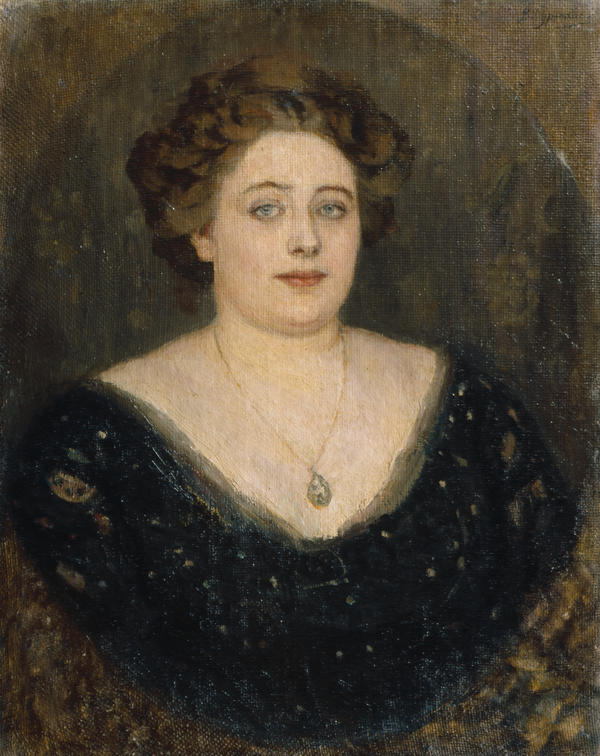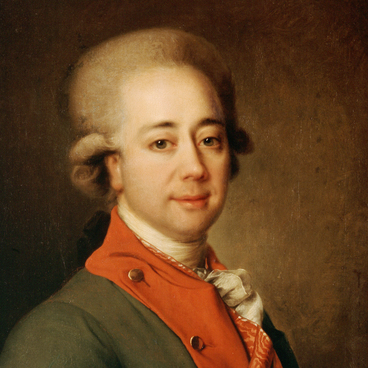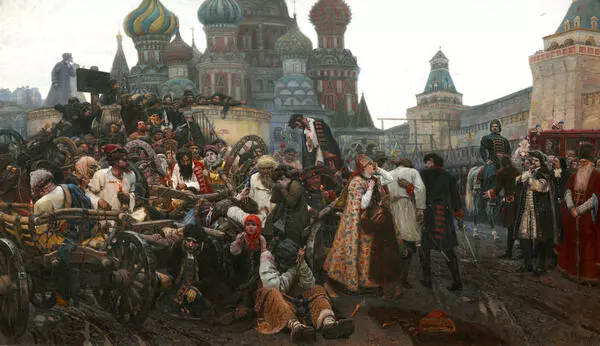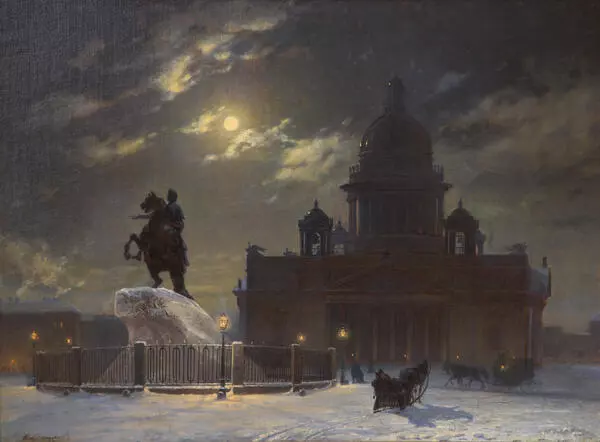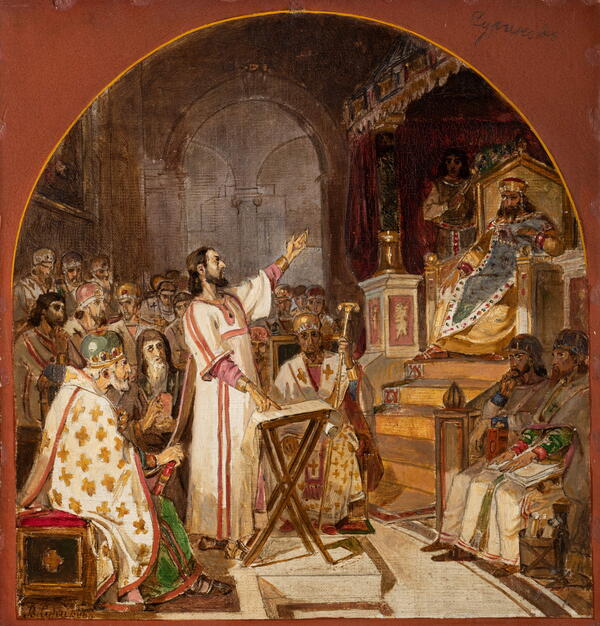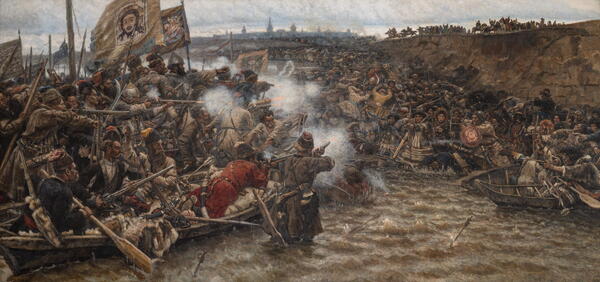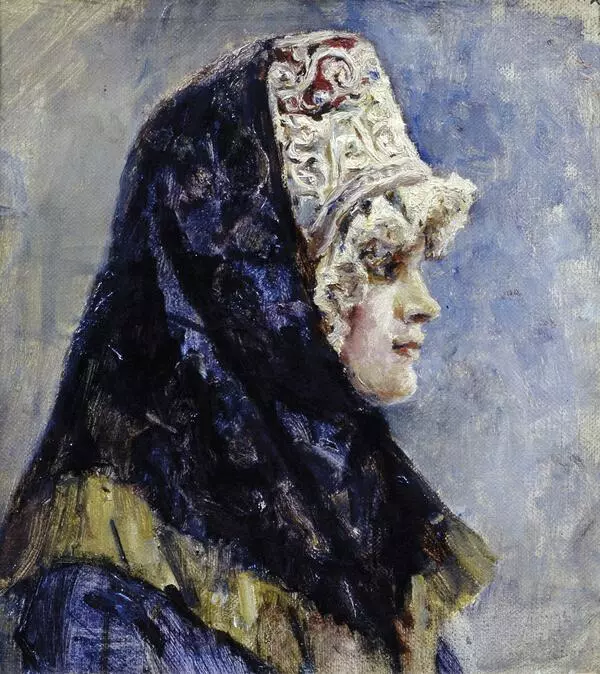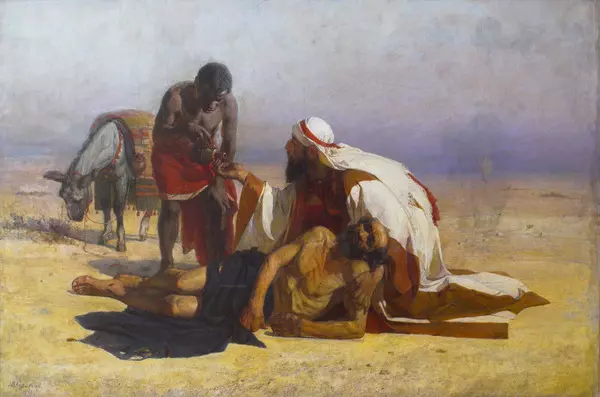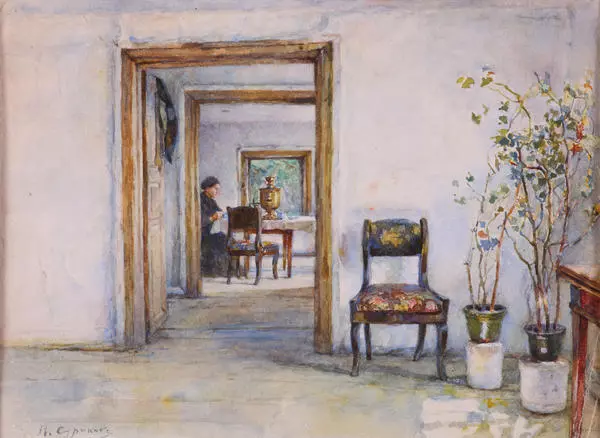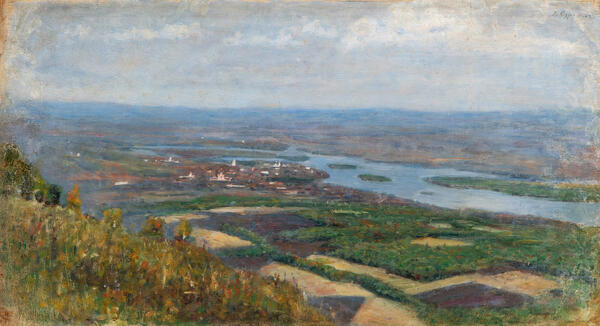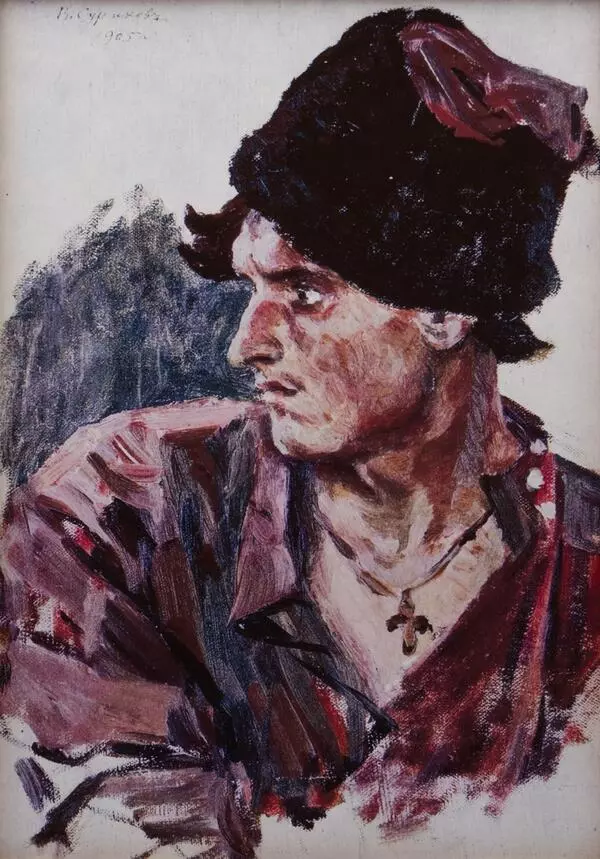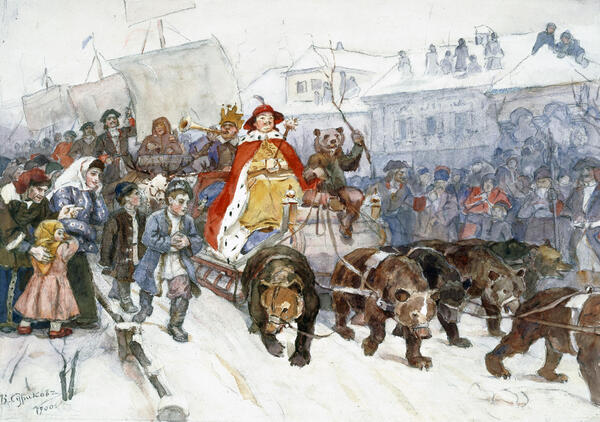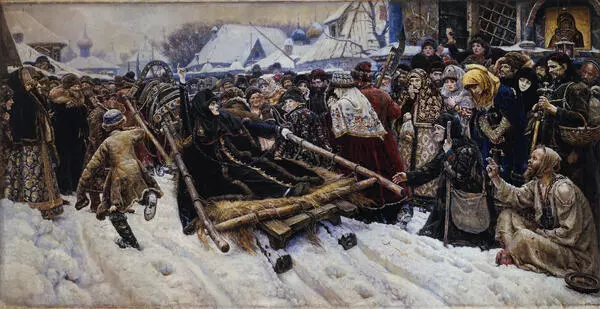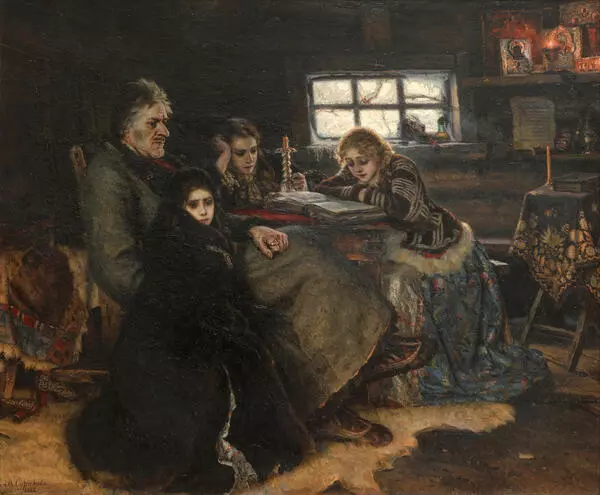Vasily Surikov was born in Krasnoyarsk, in a family belonging to the Cossack estate. After the early death of his father, the mother of the future artist had to rent out the second floor of their house. There was barely enough money, but noticing her son’s passion for drawing, she paid for painting lessons.
The first teacher of Vasily Surikov was the artist Nikolai Grebnev, who taught drawing at the Krasnoyarsk District School. Surikov’s earliest work, which survived until today, was the watercolour Rafts on the Yenisei, painted by him at the age of 14.
From 1869 to 1875, Vasily Surikov studied at the Imperial Academy of Arts with master of historical, genre and portrait painting Pavel Chistyakov. While studying, Surikov received four silver medals and several money awards for his works. The first independent painting, whereby young Surikov declared himself as a master of large-scale compositions, was The View of the Monument to Peter I on the Senate Square in St. Petersburg.
Surikov spent about three years painting one of his most famous paintings The Morning of the Streltsy Execution. But it was this work that opened the door to the artist in the world of great art. His talent was recognized unconditionally, and he became a member of the Association of Traveling Art Exhibitions.
In 1881, Surikov began work on his famous painting Boyarina Morozova. He was so meticulous about this work that in search of the perfect composition he spent more than one month on sketches and drawings. The most important paintings by Surikov also include The Capture of the Snowy Town, Suvorov Crossing the Alps and Stepan Rasin.
In the artist’s creative heritage, portraits are the exception rather than the rule. Basically, he portrayed close people. Often these works remained in families as a memory of friendship with the great artist. The owners cherished them and almost never gave them to exhibitions.
The Portrait of Velichkina entered the museum’s collection from the State Tretyakov Gallery in 1955. Biographical information about the depicted was missing, even the years of her life were unknown.
Information about the model was reported by her granddaughter Elena Opolovnikova. Olympiada Velichkina was born in 1878 and bore the title of Baroness Klodt von Yurgensburg. Surikov painted her portrait in 1914, when she was 35 years old.
According to family legend, the Baroness did not marry for a long time, so as not to change her surname. But by the time the portrait was painted, she was already married to the famous Moscow architect Viktor Velichkin and had a double surname. During the Great Patriotic War, the daughter of Olympiada Velichkina had to part with the portrait of her mother, selling him to the State Tretyakov Gallery.
The first teacher of Vasily Surikov was the artist Nikolai Grebnev, who taught drawing at the Krasnoyarsk District School. Surikov’s earliest work, which survived until today, was the watercolour Rafts on the Yenisei, painted by him at the age of 14.
From 1869 to 1875, Vasily Surikov studied at the Imperial Academy of Arts with master of historical, genre and portrait painting Pavel Chistyakov. While studying, Surikov received four silver medals and several money awards for his works. The first independent painting, whereby young Surikov declared himself as a master of large-scale compositions, was The View of the Monument to Peter I on the Senate Square in St. Petersburg.
Surikov spent about three years painting one of his most famous paintings The Morning of the Streltsy Execution. But it was this work that opened the door to the artist in the world of great art. His talent was recognized unconditionally, and he became a member of the Association of Traveling Art Exhibitions.
In 1881, Surikov began work on his famous painting Boyarina Morozova. He was so meticulous about this work that in search of the perfect composition he spent more than one month on sketches and drawings. The most important paintings by Surikov also include The Capture of the Snowy Town, Suvorov Crossing the Alps and Stepan Rasin.
In the artist’s creative heritage, portraits are the exception rather than the rule. Basically, he portrayed close people. Often these works remained in families as a memory of friendship with the great artist. The owners cherished them and almost never gave them to exhibitions.
The Portrait of Velichkina entered the museum’s collection from the State Tretyakov Gallery in 1955. Biographical information about the depicted was missing, even the years of her life were unknown.
Information about the model was reported by her granddaughter Elena Opolovnikova. Olympiada Velichkina was born in 1878 and bore the title of Baroness Klodt von Yurgensburg. Surikov painted her portrait in 1914, when she was 35 years old.
According to family legend, the Baroness did not marry for a long time, so as not to change her surname. But by the time the portrait was painted, she was already married to the famous Moscow architect Viktor Velichkin and had a double surname. During the Great Patriotic War, the daughter of Olympiada Velichkina had to part with the portrait of her mother, selling him to the State Tretyakov Gallery.

